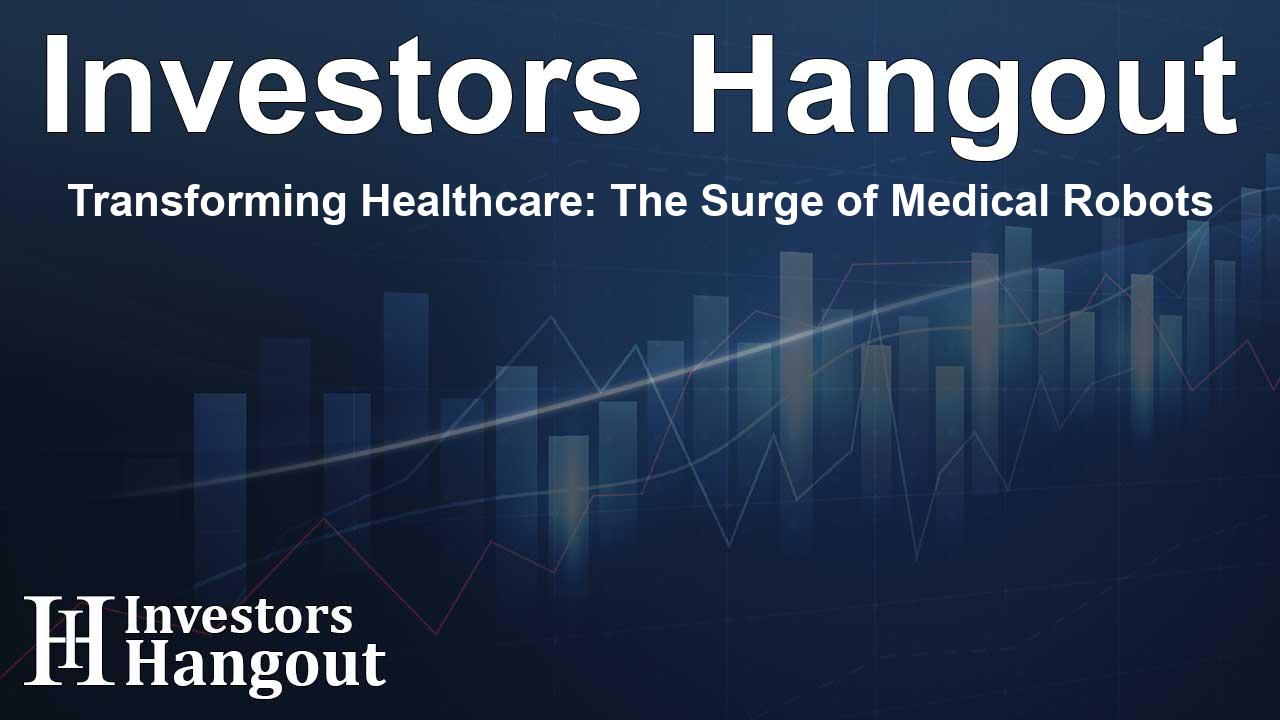Transforming Healthcare: The Surge of Medical Robots

Understanding the Rise of Medical Robots
The medical robot industry is witnessing a remarkable transformation, evolving into a vital component of healthcare driven by advances in technology and a surge in minimally invasive surgical procedures. This expanding market was valued at USD 11.51 billion in 2024 and is projected to reach approximately USD 39.07 billion by 2034, with an impressive compound annual growth rate (CAGR) of 13%. The demand for surgical robots is fueled by a growing inclination towards procedures that minimize patient recovery times and enhance surgical outcomes.
Market Drivers: What Fuels Growth?
Several key factors are propelling the medical robot market forward:
- Technological Advancements: Continuous innovation in robotic systems has led to the development of more sophisticated surgical robots. These devices allow for enhanced precision and control during operations, improving patient safety and reducing recovery periods.
- Increased Number of Surgical Procedures: Surgeons now have access to advanced robotic platforms that enable them to conduct complex surgeries with more accuracy, thus broadening the scope of surgical interventions that can be performed.
- Rising Demand for Minimally Invasive Surgery: Patients prefer procedures that result in less pain, fewer complications, and quicker recovery times. Robotic-assisted surgeries cater to this demand, leading to a shift in how surgeries are approached globally.
- Comprehensive Healthcare Coverage: More extensive insurance policies that cover robotic-assisted surgeries are encouraging hospitals to adopt these technologies, ensuring wider patient access.
Market Segmentation: Key Insights
Surgical Robots Segment Sector
In 2024, the surgical robots category captured the largest share of the medical robot market and is expected to maintain its dominance. The appeal of robotic surgery lies in its ability to facilitate smaller incisions, leading to reduced blood loss and complications, making it a preferred choice for patients and healthcare providers alike.
Regional Trends
North America remains a leading market for medical robots, backed by robust healthcare infrastructure and significant investments in technology. Meanwhile, Europe is projected to experience rapid growth in the coming years, driven by increased funding for healthcare innovations and a growing emphasis on automation in medical processes.
Applications of Medical Robots
The applications of medical robots span various fields in healthcare, reshaping the landscape of patient care:
- Surgical Assistance: Robots help surgeons perform tasks with enhanced accuracy, reducing the physical strain on patients and leading to faster recovery times.
- Rehabilitation: Robotics are utilized in rehabilitation to assist patients in regaining mobility and strength after injuries or surgeries.
- Medication Management: Automation in hospitals streamlines the medication dispensing process, reducing errors and improving efficiency.
- Telemedicine: Advances in tele-surgery allow specialists to operate remotely, making expert care accessible in under-served regions.
Recent Innovations in Medical Robotics
One standout development is the da Vinci Surgical System, created by Intuitive Surgical, which has set new benchmarks in surgical robotics. The latest version enhances surgical precision and minimizes invasiveness, aligning with healthcare's shift towards personalized care.
Case Study: MemorialCare Health System
MemorialCare has recently become a pioneer in robotic-assisted surgery through the adoption of the da Vinci 5 system, marking a significant step forward in surgical technology. This breakthrough illustrates the dual benefits of enhanced clinical outcomes alongside operational efficiency.
Challenges and Future Prospects
Despite the promising landscape, the market faces hurdles such as high operational costs and the need for extensive training for healthcare professionals. However, these challenges are being addressed through growth in AI and robotics integration that boost system functionality and reduce costs.
Frequently Asked Questions
What are medical robots and their benefits?
Medical robots are advanced machines designed for various healthcare applications, including surgery and rehabilitation. They provide benefits like reduced recovery time, less pain, and fewer complications.
How is the market distribution among regions?
North America leads the market due to its strong healthcare infrastructure, followed by Europe, which is expected to grow rapidly due to increased investment in healthcare technology.
What advancements are being made in surgical robots?
Recent advancements include AI-integrated systems that enhance precision during surgeries, enabling real-time data analysis for improved decision-making.
What challenges does the medical robot market face?
Challenges include high costs of robotics systems, the need for extensive surgeon training, and regulatory hurdles that can delay system approval.
How do robotic systems impact patient outcomes?
Robotic systems significantly improve patient outcomes by facilitating minimally invasive surgeries, leading to reduced blood loss, scars, and overall faster recovery times.
About The Author
Contact Hannah Lewis privately here. Or send an email with ATTN: Hannah Lewis as the subject to contact@investorshangout.com.
About Investors Hangout
Investors Hangout is a leading online stock forum for financial discussion and learning, offering a wide range of free tools and resources. It draws in traders of all levels, who exchange market knowledge, investigate trading tactics, and keep an eye on industry developments in real time. Featuring financial articles, stock message boards, quotes, charts, company profiles, and live news updates. Through cooperative learning and a wealth of informational resources, it helps users from novices creating their first portfolios to experts honing their techniques. Join Investors Hangout today: https://investorshangout.com/
The content of this article is based on factual, publicly available information and does not represent legal, financial, or investment advice. Investors Hangout does not offer financial advice, and the author is not a licensed financial advisor. Consult a qualified advisor before making any financial or investment decisions based on this article. This article should not be considered advice to purchase, sell, or hold any securities or other investments. If any of the material provided here is inaccurate, please contact us for corrections.
